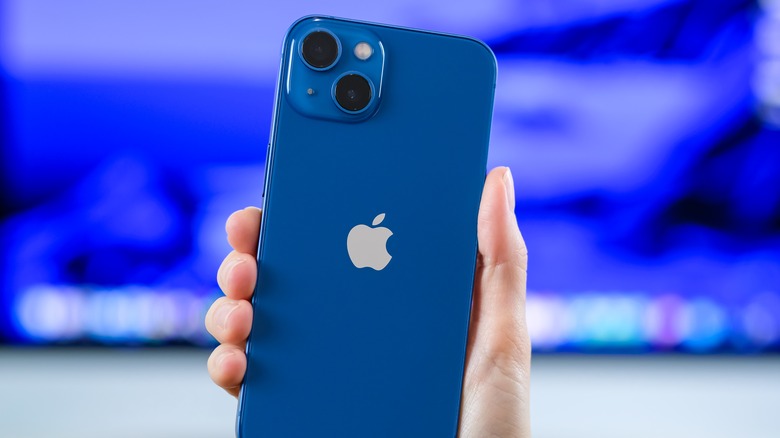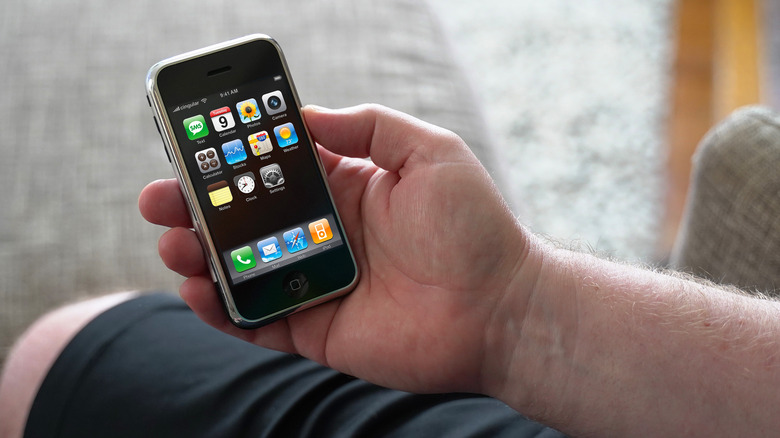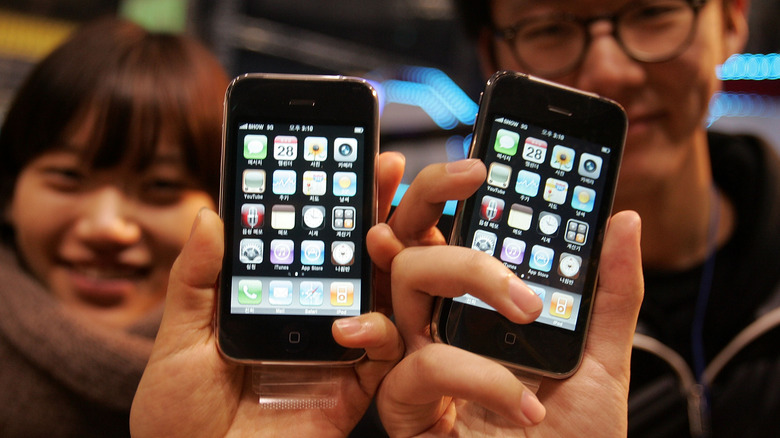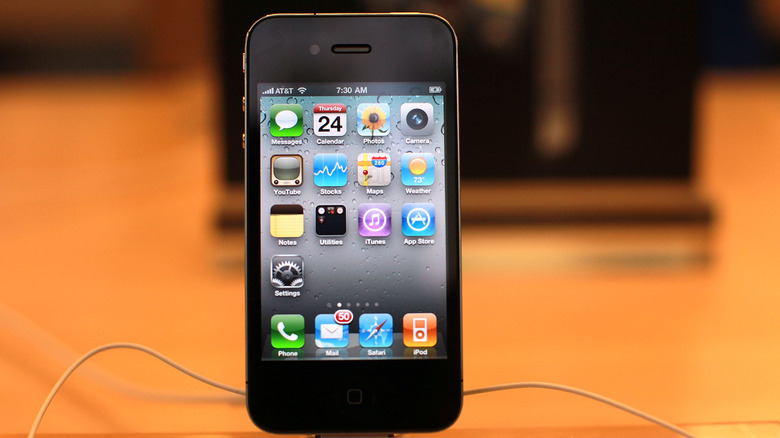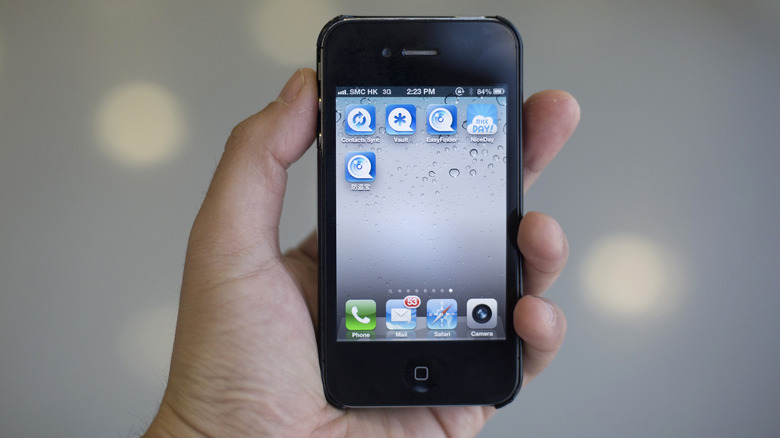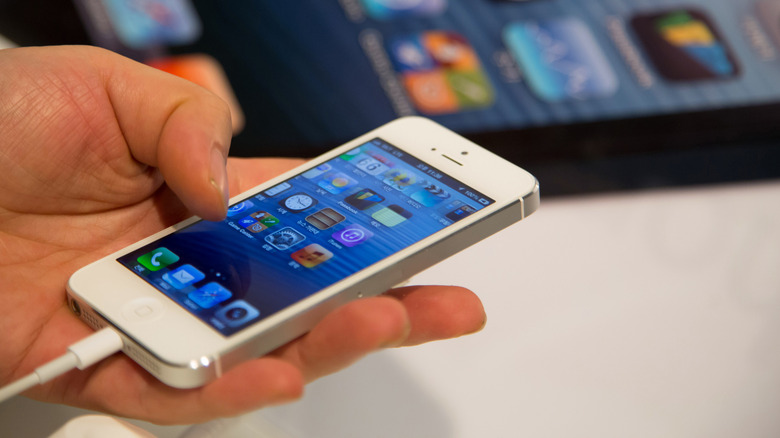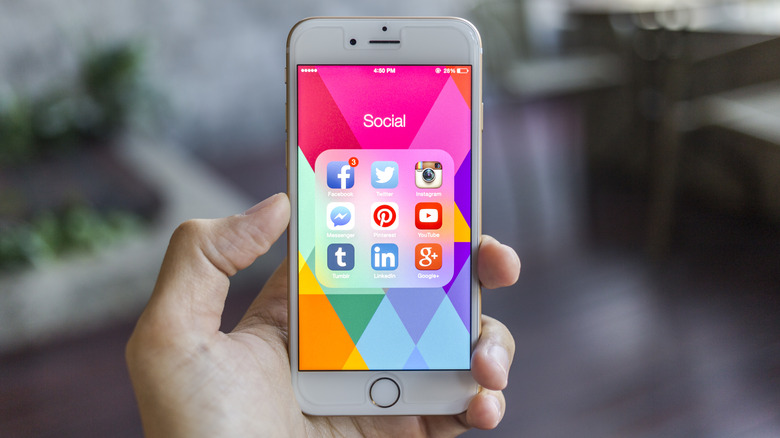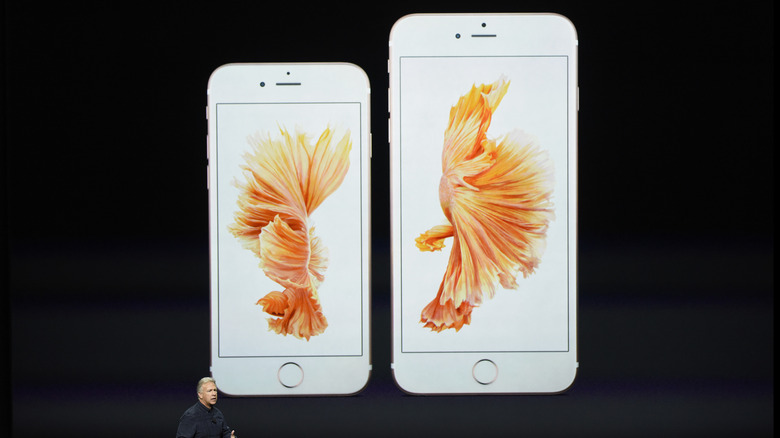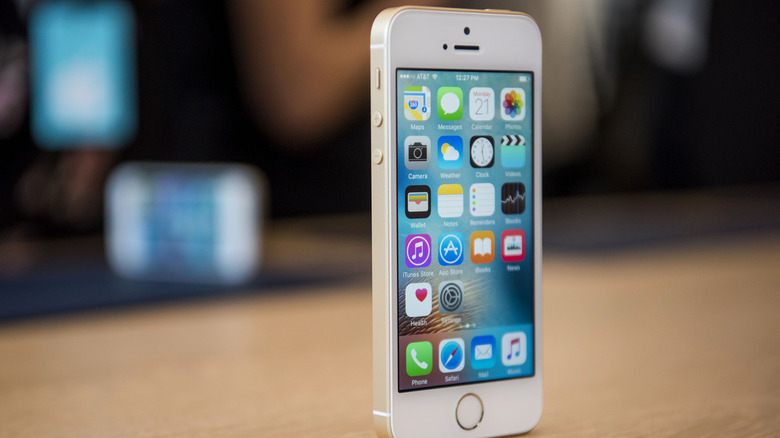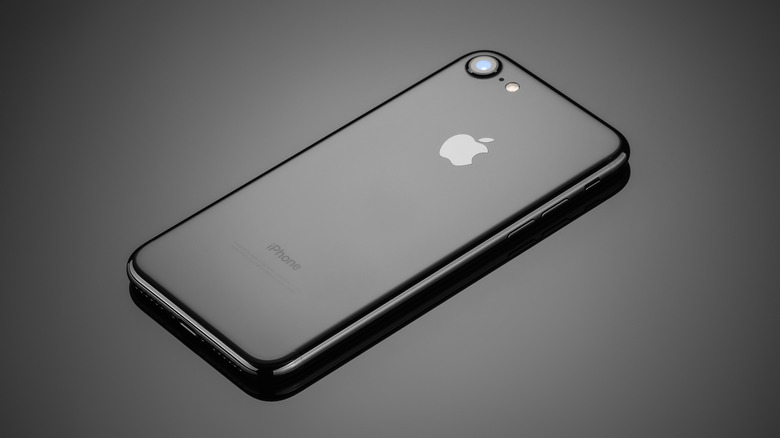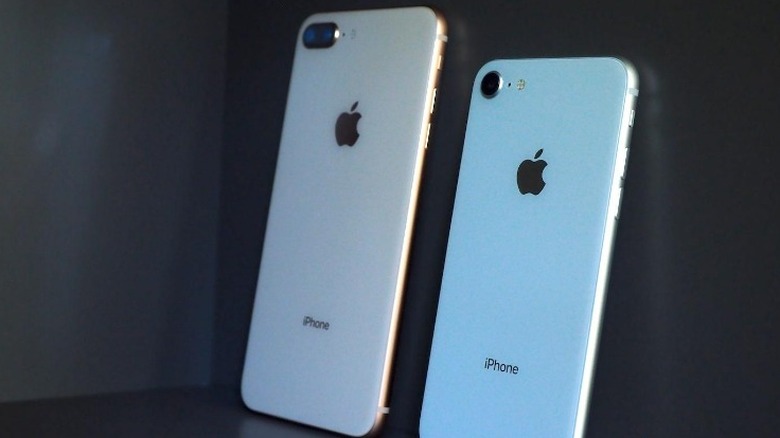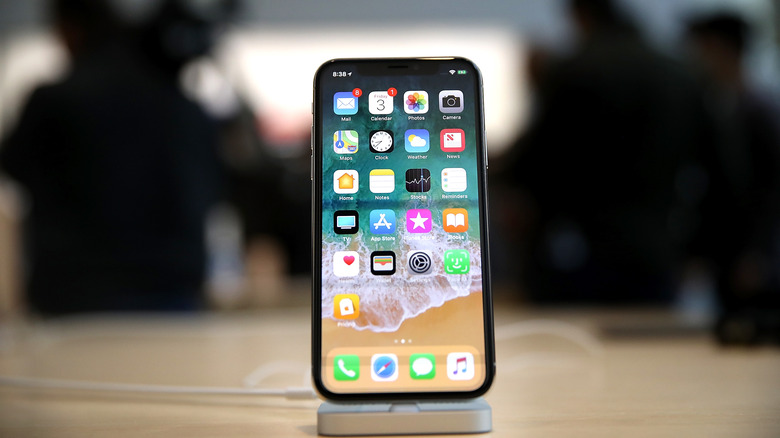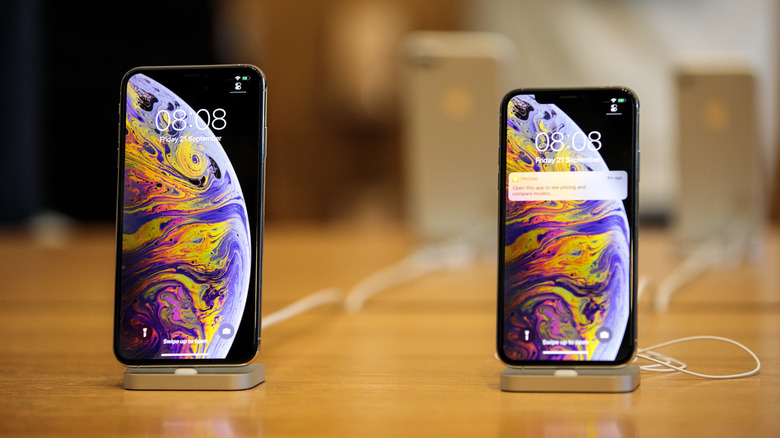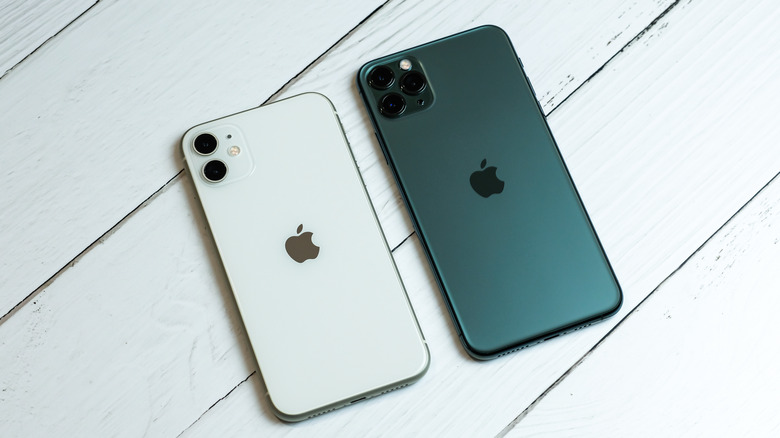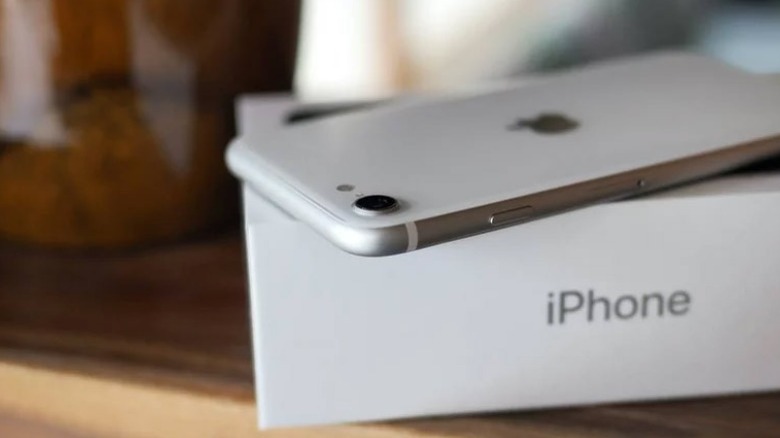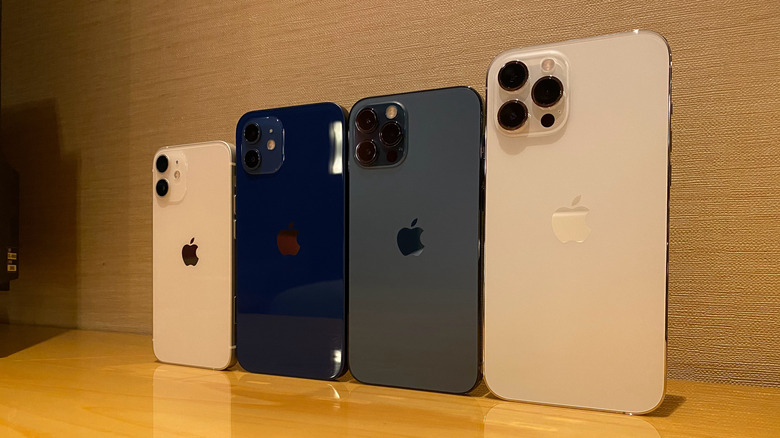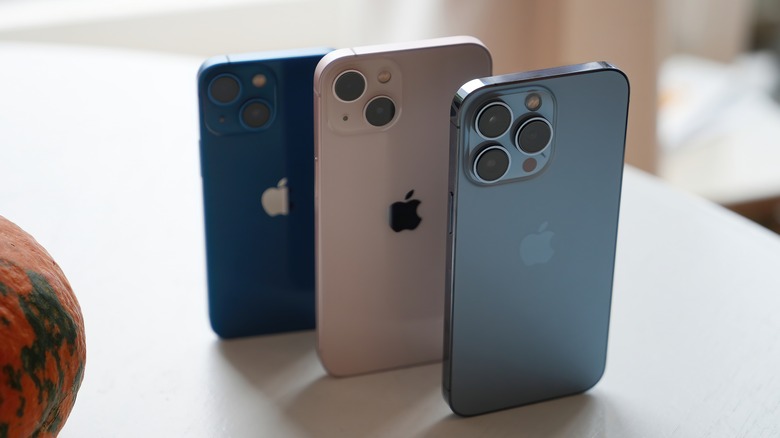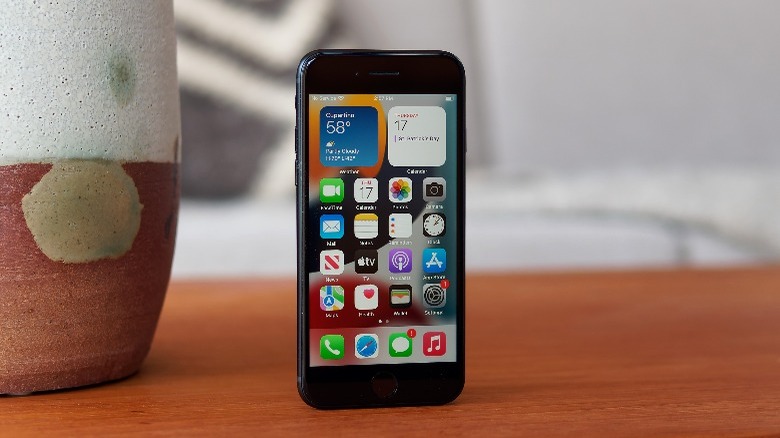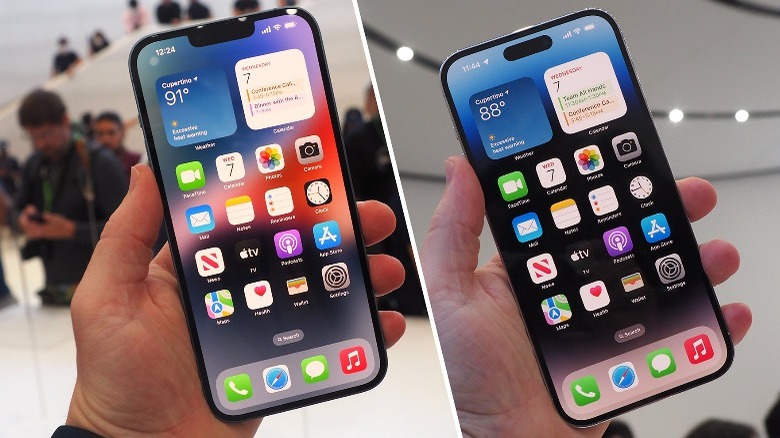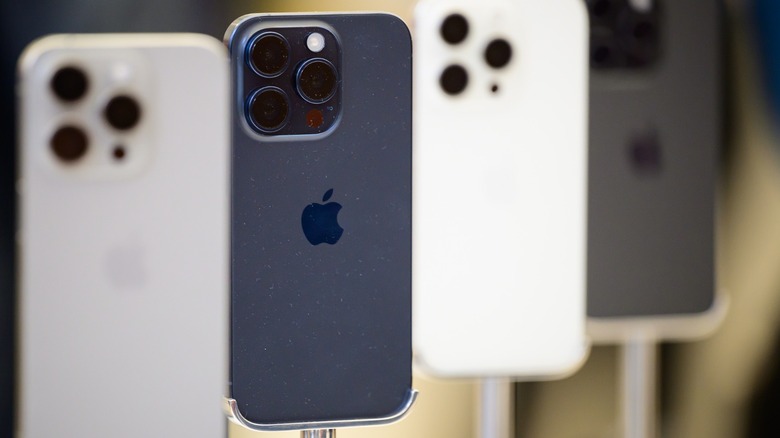The Evolution Of The iPhone From 2007 To 2023
In 2007, Steve Jobs made history when he revealed Apple's first iPhone to the world. Not only did it have the best features that could possibly be put inside the hardware, but the iPhone completely revolutionized the meaning of what a mobile phone could be. Before its inception, the existing phones on the market were led by the Nokia 1200, a basic phone with a physical keyboard and a 1.5-inch display, good enough to take and receive calls. There was also the Motorola Q — a thin, cool-looking smartphone with a physical QWERTY keyboard. No one could have anticipated the impact of the original iPhone in pushing the industry forward.
Since then, the latest version of the device is a Pro machine with ultimate features and technology — far different from what was offered at the beginning. Here we look back at how the iPhone has evolved since 2007, noting the biggest successes — and the occasional odd feature — along the way.
The original iPhone (2007)
The original iPhone was a big leap forward in the smartphone industry. It was introduced as a combination of three different products — an iPod (Apple's media player), a phone, and an internet-ready device, all in one. The iPhone had a multi-touch 3.5-inch display with a density of 320 x 480 pixels. It was a full-touch device with a home button below the screen to navigate back to the home screen and an on/off switch on the side of the phone. The phone was slim and featured a dual-tone shade of black and gray.
Based on the brand's own user interface, iOS, it was capable of running 2G networks and Wi-Fi for seamless internet connectivity, per the company's release. For the SMS system and general typing, the iPhone featured a full-fledged in-display QWERTY keyboard with predictive texting, something that was ahead of its time. With a two-megapixel rear camera and an integrated photo management system, shooting videos and taking pictures on the iPhone became quite popular. These files could easily be synced with Mac or PC, Apple noted.
Along with pre-installed iOS applications such as the weather app and Apple's own internet browser, Safari, the iPhone offered third-party applications like YouTube and Google Maps. Although, apps that were not in the inbuilt list could not be installed on the device. The first-gen iPhone was available in two different storage options — a 4GB variant for $499, and an 8GB variant for $599 (via Apple). The release date for the first iPhone was July 29, 2007.
iPhone 3G (2008) and iPhone 3GS (2009)
Just one year after the launch of the iconic iPhone, Apple released its sequel — iPhone 3G. It was a refined version of the first iPhone designed to feel a lot better in users' hands. Although the overall size of the body was the same as the first generation, the sides were more tapered, which made the iPhone 3G slimmer than its predecessor. The back of the phone was made of plastic finished in black and the 3.5-inch display was made of glass (via Apple).
iPhone 3G supported faster 3G connectivity (hence the name), which allowed users to load web pages faster on Safari. It also, for the first time ever, supported GPS tracking that could easily be synced with Google Maps. Yet, the most significant feature of the iPhone 3G was the fact that it now supported third-party applications, per the company's release. This was the first iPhone that came with the App Store — a library of apps spanning categories like gaming, health, travel, news, and more. iPhone 3G came with an upgraded storage variant of 16GB with a price tag of $299, or 8GB for $199 — half the price of the original iPhone. The release date for the iPhone 3G was July 11, 2008.
Fast forward to June 19, 2009, iPhone 3GS was released, with the "S" signifying "speed." The iPhone 3GS was an upgraded version of the iPhone 3G with enhanced specs. It operated on iOS 3.0, had double the amount of RAM, and had significantly improved battery life offering up to seven hours of media playback, Apple claimed.
iPhone 4 (2010)
iPhone 4 was introduced in 2010 with an all-new design. The new design had a stainless steel frame and a screen made of aluminosilicate glass (via GSM Arena). It was flat at the back as well as at the sides and was one of the thinnest phones on the market around that time. iPhone 4 looked quite elegant in hands and though it was initially introduced only in black, a shade of white was later added to the production.
Apart from the changes in design, the phone also featured a new display. iPhone 4 featured Apple's 960 by 640-pixel Retina display which was by far the most advanced Apple had put in any iPhone (via Apple). Everything on the screen looked super sharp and crisp. Along with the display, Apple also introduced a front selfie that enabled video calling for the first time on an iPhone. The existing rear camera was upgraded to 5 megapixels (mp) with autofocus and 4× zoom.
Coming to the internal specs of the phone, iPhone 4 featured Apple's A4 silicon chip, which made the phone incredibly fast compared to its predecessors, Apple's release notes. Along with 500MB of RAM, multitasking was now possible which allowed you to switch to other apps without closing the first. iPhone 4 was released on June 24, 2010, with Apple's latest version of the user interface — iOS 4 — and with a new storage variant of 32GB. It was priced at $299 if purchased with a 2-year contract, or $699 full retail. The base price for the 16GB version was $599 (or $199 with a 2-year contract).
iPhone 4S (2011)
iPhone 4S provided a minor "S" upgrade to the original iPhone 4. In terms of hardware, iPhone 4S was effectively the same as the previous generation iPhone 4 and continued with the glass-build and metal frame design. However, important changes were made on the inside. This was the first iPhone to feature Apple's own voice assistant system, Siri, which went on to become a significant element in every iPhones launched after this.
iPhone 4S was based on Apple's new and improved dual-core A5 silicon that enhanced its speed and performance. Other important upgrades were a new 8MP rear camera system for more detailed photos and videos and iCloud, Apple's cloud storage system for data backup. It also had two antenna bands on the sides of the body that improved the calling networks, according to the company's release.
The iPhone 4S had subsidized (2-year contract) prices of $199, $299, and $399 for its 16, 32, and 64GB internal storage size variants. The same models were available for $649, $749, and $849 full retail.
Sadly, the iPhone 4S was the last phone to be introduced by Apple co-founder and CEO Steve Jobs. He passed away on October 5, 2011, the day following the release of the iPhone 4S (October 14, 2011). Tim Cook, who was then Chief of Logistics in the company, took over the CEO position and still holds the job to this day (via Apple).
iPhone 5 (2012), iPhone 5S (2013), and iPhone 5C (2013)
Until the iPhone 4S, Apple continued to feature the same display size of 3.5-inches. When Android competitors brought phones with bigger displays to the market, Apple was compelled to change the iPhone's display size to compete. This happened with the introduction of the iPhone 5 series, which consisted of three different models – iPhone 5, iPhone 5S, and iPhone 5C.
Although larger, the screen of the iPhone 5 series was not dramatically different by today's standards: The screen size went up from 3.5 inches to 4 inches, with an aspect ratio of 16:9. iPhone 5 ran on iOS 6 which, combined with Apple's A6 silicon and 1GB RAM, offered improved performance and faster multitasking, Apple claimed. Another key update was the killing of the pin connector and the introduction of the lightning connector to replace it, which still continues in every iPhone model to date. The iPhone 5 was released on September 21, 2012, with a starting price of $649 with 16GB of internal storage.
It's important to note, here, that the prices we're mentioning for each iPhone in this article are full retail from this point forward. Regardless of the deals offered by mobile data carriers in the U.S., we're focusing on the full retail price if purchased off-contract.
Yet again, iPhone 5S was released as an upgrade to the iPhone 5, with an upgraded A7 Apple chip, a new 8MP iSight camera setup with TrueTone flash, and most importantly, the Touch ID. The traditional home button was now replaced by a biometric-ID system that was the most advanced in its league. It also packed the latest iOS 7 that brought in features like AirDrop, the control center, and the notification center. The starting price of the iPhone 5S was the same as its predecessor at $649.
The iPhone 5C effectively replicated the hardware of the iPhone 5 but with five different colorful case options. The iPhone 5S and iPhone 5C were released at the same time on September 20, 2013. The iPhone 5C had an off-contract price of $549 and a significantly subsidized 2-year contract price of $99.
iPhone 6 and 6 Plus (2014)
On September 19, 2014, Apple launched iPhone 6 and 6 Plus which, by far, carried the biggest design breakthrough since the original iPhone. The body was completely redesigned and now had curved sides throughout (via Apple). The phones were completely made of aluminum and were drastically thinner than the previous models. The iPhone 6 featured a 4.7-inch LCD Retina display with a screen resolution of 1334 x 750 pixels and a 38% increase in viewing area over the previous iPhone 5. On the other hand, the 6 Plus sported a 5.5-inch LCD retina display offering a screen resolution of 1920 × 1080 pixels and 88% more viewing area than the older iPhones.
On the inside, both phones were pretty much the same. They carried the company's latest A8 silicon chip and had RAM of 1GB each. With the latest iOS 8, iPhone 6 and 6 Plus were much more user-friendly and intuitive to use. New features were added such as the Health App, Family Sharing, and Apple Pay — at the time, an advanced system for payments of physical goods as well as in-phone purchases.
The iPhone 6 and 6 Plus became an immediate success worldwide, with over 10 million units sold on opening weekend, according to TechCrunch. The starting price for the iPhone 6 was $649, while the starting price for the iPhone 6 Plus was $749.
iPhone 6S and 6S Plus (2015)
After the huge success of the iPhone 6 and 6 Plus, Apple released the "S" upgrade of the models in 2015. iPhone 6S and 6S Plus were similar to the previous year's iPhones in terms of external looks but included a set of upgraded internal features and specs — and a more reinforced build. The body of these new models was now made up of reinforced 7000-series aluminum, similar to what is used in the aerospace industry. For the LCD Retina display, Apple claimed to use the toughest glass available on the market to make it more durable (via CNET).
Both new models were based on the A9 chip, Apple's most advanced silicon with 64-bit processing that improved the CPU and GPU performance, according to Tom's Hardware. With the latest iOS 9, Apple introduced a revolutionary feature — 3D Touch. It was a force-sensitive mechanism that allowed users to activate a secondary function by pushing down on their display with an added bit of force. For instance, users could see a sneak peek of a web page without opening it by force pressing on the URL. Similarly, apps that supported 3D Touch offered a number of quick menus activated via a force press on their home screen icon, per Apple.
The back-facing camera on these devices was a 12MP unit that could now capture 4K videos. The front camera was a 5MP setup with improved low-light photography for better quality video calls and selfie pictures. Other features included optical image stabilization for the rear and the TrueTone flash system. The iPhone 6S had a starting price of $649, while the iPhone 6S Plus had a price of $749, and both devices were released on September 25, 2015.
iPhone SE (2016)
While the world of smartphones was becoming highly obsessed with big displays and huge form factors, there were still some who admired the efficiency of a compact and handy phone. Targeting these people, Apple released the iPhone SE, a special edition mid-cycle in the iPhone's lineup with the latest internals packed in a compact form factor (via Apple).
The iPhone SE was nearly identical to the iPhone 5 in terms of design and body, with the same physical dimensions, although it was introduced in four different color finishes — Space Gray, Silver, Gold, and Rose Gold. Talking about the internal hardware, the phone was equipped with Apple's latest 64-bit A9 chip and was initially offered in two storage variants — 16GB and 64GB. 32GB and 128GB variants were later introduced in 2017. The camera setup is the same as the 6S and 6S Plus, offering a 12MP rear camera with 4K (2160p) video recording. Although, it lacks optical image stabilization.
iPhone SE was originally packed with the brand's latest iOS 9.3 and offered all the exclusive elements from the iPhone 6 Series such as Siri, Apple Pay, and Live Photos, although 3D Touch was missing. iPhone SE is essentially a 5-series era phone that packed all the updated features of the latest flagships offered by the lineup and thus, it was well-received by people who wanted to have the latest Apple perks but were more inclined toward a compact design, Apple noted. The original iPhone SE was released on March 31, 2016, with a starting price of $399.
iPhone 7 and 7 Plus (2016)
Launched in 2016, the iPhone 7 series was a significant upgrade to Apple's lineup since the introduction of the iPhone 6 (via Apple). The 7 and 7 Plus brought many "firsts" to the lineup, including the first dual-camera setup on the latter model. Both models were similar to the 6 and 6 Plus, respectively, in terms of shape and size, although there were evident changes in the design. They had a bigger camera bump, especially on the Plus model, and the 3.5mm headphone jack was gone (shoutout to AirPods), thus replaced by a secondary speaker grill instead. iPhone 7 and 7 Plus were introduced in six different color options — Black, Jet Black, Gold, Rose Gold, Silver, and Red.
On the inside, the most significant upgrade was made to the camera system, Apple noted. Both models featured a 12MP primary lens with a wider aperture of f/1.8 and were complimented with a True Tone quad-LED flash. The plus model had an additional 12MP telephoto lens with an aperture of f/2.8 and 2× optical zoom, though it lacked optical image stabilizing. The front-facing cameras were bumped up to 7MP and could shoot at 1080p.
Along with iOS 10, these models were now based on the latest A10 Fusion chip and while the iPhone 7 carried 2GB of unified memory, the plus model had 3GB RAM. Also, these models were officially the first water-resistant iPhones with IP67 water and dust certification. The iPhone 7 and iPhone 7 Plus were both released on September 16, 2016. The iPhone 6S had a starting price of $649, while the iPhone 6S Plus had a starting price of $749.
iPhone 8 and 8 Plus (2017)
One year after the launch of the iPhone 7, Apple introduced the iPhone 8 and 8 Plus as the newest flagships in the lineup. The overall design of the iPhone 8 series was nearly identical to its predecessor, except for the fact that Apple re-introduced glass backs nearly six years after taking them away. Both the models were now available in four colors- Space Gray, Silver, Gold, and Red (via Apple).
While iPhone 8 and 8 Plus retained the high-resolution display, a new TrueTone technology was added to it which, when turned on, adjusted the white balance of the display automatically in accordance with the ambient light around the phone to achieve a more natural viewing experience, Apple noted. The camera system on the 8 series was more advanced than ever, with improved 12MP camera sensors and a new Apple-designed image signal processing unit that delivered more accurate colors and brighter photos, even in low-light conditions. 4K video at 60fps could be recorded with the primary camera along with Slo-Mo videos at 1080p and 24fps, the highest-quality shooting ever offered by an iPhone.
With the help of the new A11 Bionic chip, each camera on both models was custom-tuned for AR. Developers could now use the new AR platform to design software and games based on AR for a more lively experience. These were also the first iPhone models to support wireless charging. The starting price of the iPhone 8 was $699, while the iPhone 8 Plus had a starting price of $799, and both were released on September 22, 2017.
iPhone X (2017)
To celebrate the 10-year anniversary of the iPhone's existence, Apple released the iPhone X, an iconic model that completely changed the future of the iPhone. The phone was a major breakthrough in terms of looks and features which went on to start a new design language in the world of iPhones (via Apple).
Apple noted that the iPhone X was built with glass and surgical-grade stainless steel, which gave it an industrial look. The typical front bezels were now almost gone (including the home button), leaving a 5.8-inch display with a 60hz OLED panel and a prominent notch at the top. Although the notch received polarized reviews from critics, it offered the all-new face-recognition system (Face-ID), ambient light sensors, and the earpiece.
The iPhone X packed the latest iOS 11, redesigned to perfectly complement the new elements such as the Face ID and the phone's bigger display. The removal of the home button led to the introduction of new swipe gestures for users to navigate across the screen. This was also the first non-plus model to feature a dual-camera setup at the back, with the primary and wide-angle lens rated at 12MP. At the front was the same 7MP camera from previous models, which enhanced the Face ID system. iPhone X ran on the A11 Bionic chip and had 3GB of RAM. Offered in 64 and 256 GB variants, this release was priced at $999 — the biggest starting price for an iPhone yet, at that time. The original iPhone X was released on November 3, 2017.
iPhone XS, XS Max, and XR (2018)
In 2018, Apple released the iPhone XS and XS Max – two new models with significant upgrades to the previous year's iPhone X. While both phones were top-of-the-line flagship variants with quite heavy price tags, the company launched a third model, the iPhone XR, to balance out the flagship models with a cheaper price but updated features (via Apple).
iPhone XS and XS Max were identical to the iPhone X in terms of design, with the latter model featuring a 6.5-inch Super Retina Display — the biggest screen in iPhone's history. Both the models were now based on the latest A12 Bionic silicon with the next-generation Neural Engine that offered faster processing, faster Face-ID, and immersive stereo sound experience. The improved camera systems offered faster sensors and the Smart HDR technology provided crisp photos with high detailing. Advanced machine learning significantly improved the Portrait Mode with a better bokeh effect and more depth of field. iPhone XS and XS Max were offered in 64, 256, and 512 GB variants, according to Apple.
iPhone XR carried most of the flagship features in an economic price range. The phone had a 6.1-inch LCD display and the bezels on the XR were slightly thicker than its sister variants. Aluminum frame instead of stainless steel and the phone was offered in six finishes, including blue, yellow, and coral. Internal specs of the phone were the same as the flagship models, although it had a single 12MP camera setup, the company noted.
The iPhone XR had a release date of October 26, 2018, and a starting price of $749. The iPhone XS and XS Max shared a release date of September 21, 2018. The starting price for the iPhone XS was $999, and the starting price for the XS Max was $1099.
iPhone 11, 11 Pro, and 11 Pro Max (2019)
Following the trend of revealing multiple models, Apple launched the iPhone 11 series in 2019 with three models: iPhone 11, 11 Pro, and 11 Pro Max. For the first time, Apple named a model "Pro," signifying its ultimate features for advanced performance. All three models were equipped with Apple's latest A13 Bionic chipset (via Apple).
iPhone 11 was essentially the successor of the Xr, with a dual-camera setup. It had the same 6.1-inch LCD display, was surrounded by an aluminum frame, and was available in multiple colorful finishes. The dual-camera featured a 12MP primary sensor with optical image stabilization and for the first time, a 12MP ultra-wide sensor for a wider field of view. With the new iOS 13, Night Mode was introduced which drastically improved low-light photography, Apple noted.
On the other hand, the pro models featured the new frosted glass back with the stainless steel frame and, for the first time in iPhone's history, a triple camera setup at the rear. Along with the ultra-wide and wide-angle lens found in the non-pro model, a 12MP telephoto lens joined the club. Both models were equipped with a Super Retina XDR display but in two different sizes. The 11 Pro featured a 5.8-inch OLED panel, while the Pro Max offered a 6.5-inch display. The A13 Bionic chip integrated with the latest iOS 13 significantly improved the phone's performance and battery efficiency. Pro models were offered in four finishes, along with a new "Midnight Green" edition, per Apple's release.
The iPhone 11, 11 Pro, and 11 Pro Max were all released on September 20, 2019. The starting price for the iPhone 11 was $699, while the starting prices for the iPhone 11 Pro and 11 Pro Max were $999 and $1099 respectively.
iPhone SE (2020)
The iPhone SE (2020), also known as the iPhone SE (2nd Generation), was released on April 24, 2020. It mimicked the pricing structure of the original iPhone SE, starting at $399 for its most reserved iteration. This version of the device also included two more tiers, one for $449, and another for $549, matching the starting price of the iPhone X.
Where the original iPhone SE looked like an iPhone 4, the iPhone SE (2020) looked like an iPhone 8. Its hardware was so similar, in fact, that protective cases that fit the iPhone 8 could also be used with the iPhone SE (2020). This device was one of the last iPhones with Touch ID — the original circular home button that doubled as a fingerprint scanner.
This is a device that arrived at a very strange time in history when having an iPhone with a fingerprint scanner felt like a luxury as Face ID didn't always work for people wearing face masks. Our original iPhone SE (2020) review shows why the purchase price for this retro-looking device made sense for some but fell short for others.
iPhone 12, 12 Mini, 12 Pro, and 12 Pro Max (2020)
With the iPhone 12 series, Apple introduced the all-new mini model with a compact design along with the existing regular and pro models. Known as the iPhone 12 mini, it features a 5.4-inch Super Retina Display with an edge-to-edge design, delivering the signature iPhone user experience in a much more handy form. The regular iPhone 12 equips the same display with a 6.1-inch screen, providing a larger screen-to-body ratio than the previous generation's non-pro model. Both iPhone 12 and 12 mini are made of aluminum and sport the then-industry-leading A14 Bionic chip. The dual-camera setup at the rear was improvised for better image processing (via Apple).
The Pro variants-12 Pro and 12 Pro Max are made up of premium materials like glass and stainless steel and now had a flat-edge design at the sides. The existing triple camera setup featured a new f/1.6 aperture wide-angle lens with improved low-light photography and the ultra-wide lens was improved with a 120-degree field of view for those magnificent landscape shots. The telephoto camera featured a 52 mm focal length lens for portrait shots with 4× optical zoom. Furthermore, a LiDAR scanner was equipped in the rear camera bump which enhanced the AR applications for an immersive experience. Both the Pro variants were equipped with the same Super Retina XDR display with improved brightness that peaked at 1,200 nits. With the advanced A14 Bionic Chip, the 12 Pro and 12 Pro Max became the best performing phones on the market, the company stated.
The iPhone 12 family had an odd pair of release dates. The iPhone 12 and iPhone 12 Pro were both released on October 23, 2020, while the iPhone 12 Mini and iPhone 12 Pro Max were both released on November 13, 2020. Starting prices for the iPhone 12 and 12 Mini were $829 and $729, respectively. The iPhone 12 Pro had a starting price of $999, while the iPhone 12 Pro Max had a starting price of $1099.
iPhone 13, 13 Mini, 13 Pro, and 13 Pro Max (2021)
Launched in September 2021, the iPhone 13 Series is nearly the same as the previous generation's models in terms of design, except for the new notch design that was significantly reduced in size. The non-pro models now have their cameras diagonally arranged. All four models feature the latest industry-leading A15 Bionic chipset with impressive battery life. They also have significantly improved camera systems, especially in the Pro models (via Apple).
iPhone 13 and 13 mini feature the most advanced camera system in the non-pro family, with extensive image processing for sharper details, per Apple. The all-new Cinematic mode adds more depth of field while recording videos by automatically shifting its focus across different subjects and provides an immersive shooting experience.
The Pro models, for the first time ever, feature a ProMotion display that supports dynamic refresh rates right from 10 Hz to 120 Hz, depending on the content being played. The camera systems on the 13 Pro and 13 Pro Max, along with the Cinematic Mode are the most advanced on any iPhone. The size of the sensors has significantly increased, allowing more light to enter for ultra-bright shots. Advanced machine learning offered by the A15 Bionic chip provides multi-frame image processing with the most accurate colors, adding more life to the pictures, Apple noted.
The iPhone 13 series was released on September 24, 2021. The iPhone 13 had a starting price of $829, while the iPhone 13 Mini had a starting price of $729. The iPhone 13 Pro had a starting price of $999, and the iPhone 13 Pro Max had a starting price of $1099.
iPhone SE (2022)
With the release of the iPhone SE (3rd Generation), also known as the iPhone SE (2022), we got what felt like a small jump in design, but a large jump in capabilities. The design remained effectively the same as its predecessor, complete with a single camera on its back, rounded edges, and a rectangular 4.7-inch display up front.
Touch ID remained as convenient as ever, and in 2022 the tech wasn't available in any other iPhone still actively sold by Apple. With a starting price of $429, the lowest price point for a new iPhone sold by Apple continued to creep ever higher. But given the reliability of this handset alongside better battery performance, a better camera (and camera software), 5G connectivity, and a newer chipset, the price felt more spot-on than ever.
It still felt a little shocking to see such a tiny display on a new smartphone in a time when the average new smartphone had a significantly larger screen. But for those consumers looking for the most simple, baseline, reliable mobile smartphone on the market — this remained the default best choice for most.
iPhone 14, 14 Plus, 14 Pro, and 14 Pro Max (2022)
The iPhone 14, iPhone 14 Pro, and iPhone 14 Pro Max were all released on September 16, 2022, while the iPhone 14 Plus was released on October 8, 2022. Thus it was that the "Mini" member of the iPhone family was removed from the picture, and the least of the devices, the iPhone 14, had a starting price of $799 (a bit more than the starting price for the iPhone 13 Mini at $729).
The iPhone 14 Plus was announced with a starting price of $899, while the iPhone 14 Pro started at $999, and the 14 Pro Max started at $1099. The iPhone 14 has a 6.1-inch OLED display with a notch, designed quite similar to its predecessor, as you'll see in our full iPhone 14 Review. If you take a look at our iPhone 14 Plus "first look" feature, you'll see how the iPhone 14 Plus has the same screen dimensions as its Pro Max counterpart at 6.7-inches. The difference comes in the notch, as the Plus has the notch and the Pro has the island.
The iPhone 14 Pro family has a new way of handling its front-facing camera and sensor array. Instead of the notch, Pro opts for a pill-shaped punch hole. For most phones, this sort of thing is a necessary concession made in order to keep a front-facing camera at the same time as it delivers a nearly full coverage front display. Apple managed to turn it into a positive feature with what they call their Dynamic Island — and it's pretty enticing.
iPhone 15, 15 Plus, 15 Pro, and 15 Max (2023)
The iPhone 15 quartet brings one of the most substantial changes to Apple's smartphone portfolio in its history. The company ditched its legacy Lightning port in favor of a USB-C cable across all four iPhone 15 models. The 2023 lineup also marks the final goodbye of the boat-shaped notch on mainline iPhones. All iPhone 15 trims embrace the pill-shaped Dynamic Island at the top, housing the front camera and the Face ID hardware, while also serving as an interactive notification alert system.
For the iPhone 15 Pro and its Max variant, Apple ditched stainless steel in favor of a titanium chassis that led to a significant weight reduction while also bringing improvements to heat dissipation. However, the more notable changes are reserved for the internal hardware. The A17 Pro chip powering the Pro models in 2023 is the industry's first 3nm-based silicon processor, and it brings console-grade games like "Resident Evil Village" and "Assassin's Creed Mirage" to iPhones for the first time.
The mute switch is also gone, making way for a highly customizable action button. Apple also made significant strides in the camera department. The iPhone 15 and its Plus trim get an upgraded 48-megapixel camera that is capable of 24-megapixel image capture. On the iPhone 15 Pro Max, Apple bumped up the telephoto camera's capability to 5x zoom. The iPhone 15 starts at $799, while the iPhone 15 Plus goes for $899. The iPhone 15 Pro costs $999, and its Max version has a sticker price of $1,199.
